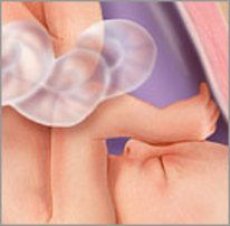Medical expert of the article
New publications
Pregnancy: 30 weeks
Last reviewed: 20.11.2021

All iLive content is medically reviewed or fact checked to ensure as much factual accuracy as possible.
We have strict sourcing guidelines and only link to reputable media sites, academic research institutions and, whenever possible, medically peer reviewed studies. Note that the numbers in parentheses ([1], [2], etc.) are clickable links to these studies.
If you feel that any of our content is inaccurate, out-of-date, or otherwise questionable, please select it and press Ctrl + Enter.

How the child grows:
The height of the baby is 39 cm, and the weight is almost 1.5 kg. One and a half liters of amniotic fluid surround it, but this volume will decrease, as the child grows and takes up more space in the uterus. His vision continues to evolve, although this process will continue after the birth.
Important: the development of each child is strictly individual. Our information is designed to give you an idea of the development of the fetus.
Changes of the future mother
You may feel tired, especially if you have trouble sleeping. In addition, because of hormonal changes, weight concentration in the abdominal area and loosening of the ligaments, you can increase the size of the shoe.
Do you remember mood swings in the early stages of pregnancy? The combination of symptoms that cause discomfort and hormonal changes can lead to a repetition of emotional instability. To worry and worry about the process of birth is normal, but if you feel irritated or overly excited, talk with your doctor. You can treat 1 in 10 women who are depressed during pregnancy.
Common fears of childbirth
Are you afraid of childbirth? You are not alone! Listed below are the most common fears and recommendations for their elimination.
- I can not cope with the pain.
Every fifth pregnant woman says that her main fear is pain during labor. Some women beforehand decide on anesthetics during labor. With proper preparation and support, some women consider natural childbirth - the best option.
- I will be prone to episiotomy.
Episiotomy - a cut of the perineum for the purpose of facilitating childbirth, is performed immediately before childbirth in order to increase the vaginal passage. Some women experience gaps in this area during childbirth, which must be stitched. Consult your doctor about how often and under what conditions he performs episiotomy, and how to avoid tears. There is some evidence for that factor that gaps are less likely if you begin to massage your crotch about five weeks before the birth.
- I will have defecation during childbirth.
In a recent BabyCenter survey, 70 percent of women said they were afraid of defecation during labor, 39 percent said that it actually happened to them and only 22 percent were embarrassed by this fact. Believe me, this can not be noticed. If defecation occurs, the doctor will clear everything before you know what happened.
- I will be prone to unnecessary medical intervention.
The best way to overcome fear is to talk about it with your doctor. If you trust and respect your doctor, you can be sure that he will do his best to make the births go without complications.
I will have a cesarean section. MS as long as every fifth woman, giving birth for the first time, undergoes a caesarean section, this fear is understandable. Some mothers feel cheated, especially if they believe that there was no need for surgery. If you are afraid of unnecessary surgical intervention, discuss this with your doctor before giving birth.
- I will not have time in the hospital at the right time.
Immediate delivery is extremely rare in the first birth, but if you are worried about this, read the instructions for emergency home birth.


 [
[